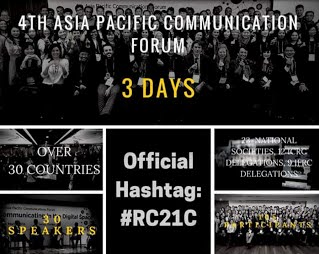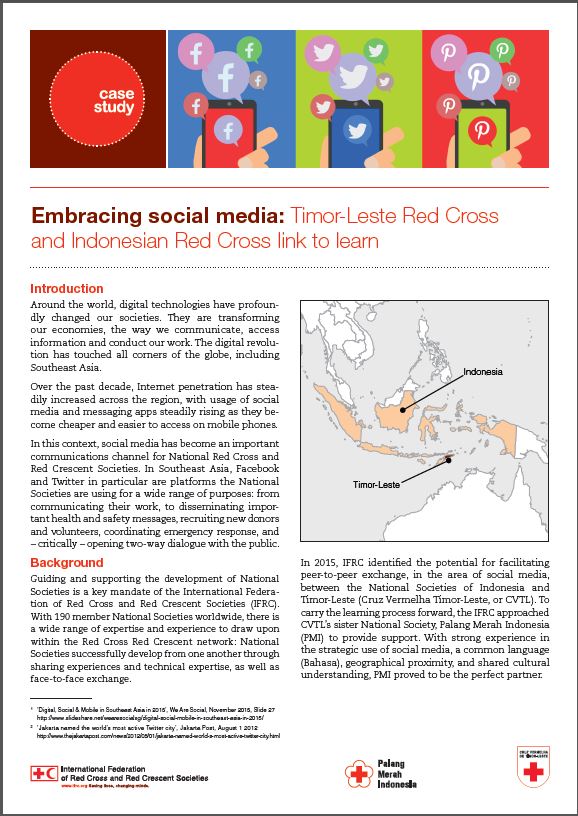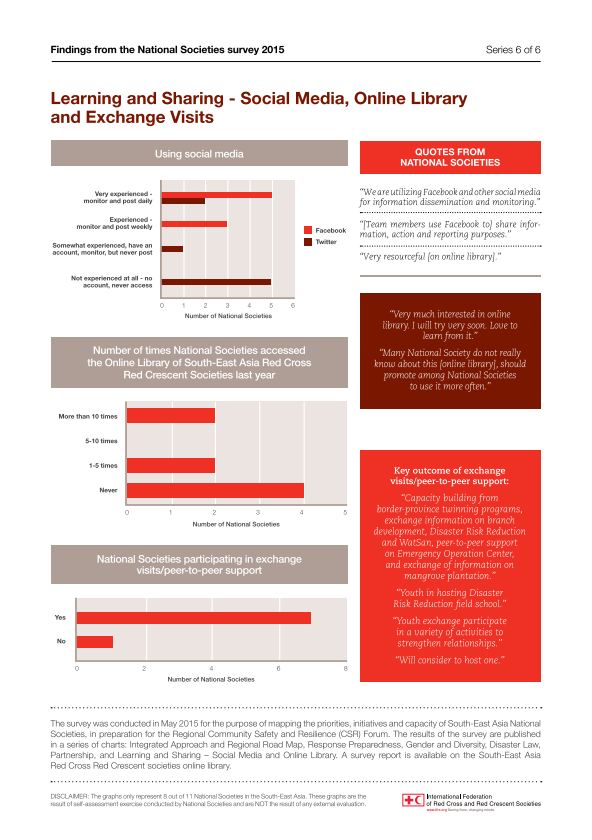The document serves as a brief guide for those using social media in humanitarian organizations.
In the past few years, the role of social media and digital technologies in times of disasters and crises has grown exponentially. During disasters like the 2011 Tohoku earthquake and tsunami, and the 2015 Nepal earthquake, for instance, Facebook and Twitter were crucial components of the humanitarian response, allowing mostly local, but also international actors involved in relief efforts, to disseminate lifesaving messages. They also offered affected communities a channel to seek help, reconnect with their families and provide feedback on the assistance received so that programmes could be adapted, when possible.
Existing studies show that digital communications channels can be critical before, during and after natural disasters, crises and armed conflicts, to save lives and reduce suffering (e.g. by disseminating of early warning messages and safety tips, helping people to reconnect with their loved ones, directing affected people to humanitarian services…).
However, the use of social media by humanitarian organizations to engage and communicate with (not about) affected people is, to date, still vastly untapped, and largely under researched and documented in terms of the provision of practical guidance, both thematically and technically, good practices and lessons learned. This brief guide, initiated by the International Committee for the Red Cross (ICRC) and the International Federation of Red Cross and Red Crescent Societies (IFRC), and developed with support from the Office for the Coordination of Humanitarian Affairs (OCHA), is a living document that aims to address this.
![]()







